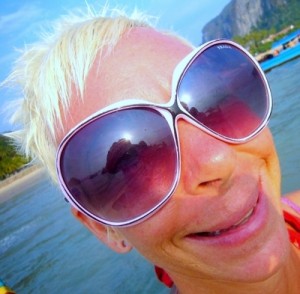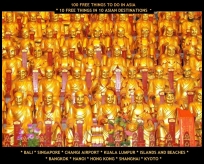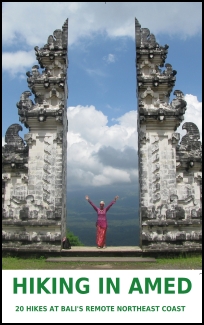
Introduction to Liechtenstein
Liechtenstein is a tiny European country, wedged between Switzerland, to the west, and Austria to its east. The country is not just tiny, it’s the 6th smallest country in the world! Only Vatican City, Monaco, Nauru (Pacific island nation), Tuvalu (ditto) and San Marino are smaller than Liechtenstein.
For a point of reference in America, Liechtenstein is only 0.9 times the size of Washington D.C.! That is tiny! More specifically, the country measures just 160 km sq / 66 miles sq. The country is sometimes referred to as a microstate.
It’s official title is the Principality of Liechtenstein. The population is a little over 40,000.
Amazingly, Liechtenstein does not have one single airport in its country! You cannot fly into or out of Liechtenstein! Instead, you can get there by train and/or bus from Switzerland or Austria, or else drive.
Actually, you can’t arrive into Liechtenstein by train either, as there are no trains or train lines in the entire country! If you head to Liechtenstein by train, the closest train stations are just across the border in Switzerland, near Vaduz, the capital. From there, everyone has to transfer to a bus to cross the border into/out of the country.
Getting around the country is possible only by bus or private car.
The capital city is Vaduz, located in the west of Liechtenstein, just across the border from Switzerland. Vaduz, and a narrow strip of land around it, constitute one of the country’s few fairly flat areas.

Geography of Liechtenstein
Liechtenstein is the only country in the world that lies entirely within the Alps. Needless to say, it’s mostly quite mountainous. It’s also completely landlocked and largely undeveloped, with only 11% of the land inhabited and 40% of the country covered in forests, plus many rivers, streams and mountains.
Although Liechtenstein is located entirely within the Alps, its mountains are not particularly high, especially compared to other nearby Alp mountains. Liechtenstein’s highest peak is Vordere Grospitz at 2599 M / 8527 ft. In total, there are 32 peaks over 2000 M / 6600 ft, but that’s nothing compared to the peaks in neighboring (and quite nearby) Switzerland, Austria and Italy.
In Zermatt, Switzerland, one of the country’s major skiing spots, there are more than 38 peaks over 4000 M / 13,200 ft. Big difference! And Zermatt is just one of Switzerland’s high mountain areas. Italy has a similar range, while Austria’s peaks are in the 3600-3700 M range.
Regardless of their height, with so many mountains and pristine natural areas, Liechtenstein is a wonderful country for outdoor enthusiasts and sports like skiing, snowboarding, cross-country skiing, sledding, hiking, cycling and off-road biking.
For hikers there are 400+ km of hiking trails of all difficulty levels. The most famous and longest trail is called Liechtenstein Way, a 75 km route for hikers and cyclists.
Skiing and other winter sports are hugely popular in Liechtenstein. Surprisingly, though, given its mountainous terrain, the country has only one ski area, Malbun. Regardless, several medal-winning Olympic skiiers hail from Liechtenstein.

Brief History of Liechtenstein
Liechtenstein was officially established as a country in 1719. That makes it older than the USA! Just a few years ago, in 2019, Liechtenstein celebrated its 100th anniversary.
Establishment of the country was a bit complicated. It got rolling when Prince Johann Adam Andreas of Liechtenstein bought the domain of Schellenberg in 1699 and then the county of Vaduz in 1712. The Prince also owned large tracts of land in nearby Austria, Bohemia and Moravia.
It was the Holy Roman Emperor who officially declared the area to be called Liechtenstein, after the prince, and established the country to be ruled by the prince and his descendants.
One oddity about Liechtenstein is that its ruled by a prince, not a king or queen. It’s referred to as a Princely Monarch. Like all royally-led countries, the rule is passed down from the father.
Since 1921, the country has been a Constitutional Monarchy with a parliamentary government based in Vaduz. The country is a member of EU, but uses the Swiss franc as currency rather than the Euro.
Nowadays, Liechtenstein is also a member of WHO, the UN, EU Council, EFTA and other important international organizations.

Liechtenstein’s Royal Family
Liechtenstein’s royal family is one of the oldest in Europe. The current Prince of Liechtenstein is the 13th successor in the family.
One unusual aspect of Liechtenstein’s royal family is that they actually live in a historic castle that’s located on a steep hillside above Vaduz. The royal family has officially lived in the castle since 1938. The castle itself dates way back to the 1200s, but has been owned by the princely family since 1712.
The Prince of Liechtenstein is the fifth wealthiest monarch in the world, as of 2019, with an estimated wealth of $3.2 billion US.
The royal family is also a huge arts patron. In fact, the family holds one of the largest, most important art collections in the world. The royal family’s love of the arts is quite evident in the capital, Vaduz.
Dozens of huge sculptures, by some of the world’s most renowned artists, are placed throughout the compact downtown. The tourist information center even has a brochure detailing all the sculptures in a self-guided tour.
There’s also a national history museum, a national treasury museum, a fine arts museum, a postal museum and several art galleries. Vaduz town center also has plenty of watch shops selling the best Swiss watches.

Economy & Standard of Living
Liechtenstein is one of the most expensive countries in the world, on par with Switzerland, with high wages and an extremely high standard of living. The average annual salary is 72,000-90,000 Swiss francs. That’s about $87,500-$107,500 US per year.
There is zero poverty, no homelessness and extremely low unemployment.
Liechtenstein is also extremely clean and safe, one of the safest in the world.
Liechtenstein is big on manufacturing, which accounts for more than 40% of its GDP. Interestingly, two of the country’s biggest export industries are false teeth and prosthetics. It’s also a big financial and banking center.
Rather surprisingly, Liechtenstein has an extremely international population. There are people from approximately 115 different countries residing in the country! Perhaps given the high wages, that shouldn’t be so surprising.

Visiting Liechtenstein
Even though there are no airports in Liechtenstein, it’s quite feasible to visit the country in a day trip from Zurich, Switzerland. At least a visit to Vaduz. In fact, that’s what I did!
Somewhat amazingly, trains from Zurich to train stations just across the border from Vaduz take just 1.5 hours. It’s a beautiful journey along vast Lake Zurich, then across rural countryside and another smaller lake to the border. From the train station, frequent buses cross over into Liechtenstein and into Vaduz.
There’s plenty of time to see all of the sights, museums, shops and even hike up to the princely castle in one day. Then return to Zurich in the evening or else head on to other destinations.
Travelers who want to see more of the pristine and beautiful little country can spend a few days, a week or two, exploring the country by bus or private car. There are plenty of tidy little villages, stunning scenery, hiking and cycling trails or skiing in winter.
Summary
I hope this peaked your interest in pretty little Liechtenstein. I certainly enjoyed my day trip to Vaduz from Zurich in May, 2025. I’ll be writing about my experiences next!
You might also enjoy:
6 Crazy Facts about Switzerland
13 Things I Love about Eastern Europe
========================










 Hi! I'm Lash, an American nomadic world traveler who's been traveling solo since 1998. I’m passionate about traveling the world nomadically and then sharing it all with you. I hope to inspire you to travel the world, to entertain you with tales from the road, and to help you reach your travel dreams. Welcome!
Hi! I'm Lash, an American nomadic world traveler who's been traveling solo since 1998. I’m passionate about traveling the world nomadically and then sharing it all with you. I hope to inspire you to travel the world, to entertain you with tales from the road, and to help you reach your travel dreams. Welcome! 



